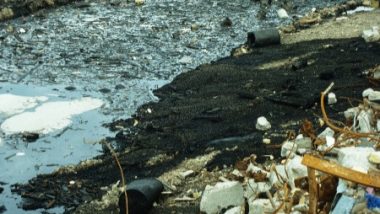Hazardous Waste is defined by reference to the European Waste Catalogue (EWC). If a waste producer does not know whether hazardous chemicals or properties are present in the waste it produces, each separate component of the waste must be considered.
Identification of waste is seldom simple, but it becomes even harder where it does not arise from a pure process, waste from the manufacture of paints, adhesives or printing inks for example. Whether these are in use or whether they are simply contaminated (such as waste removed from a refurbished building) the hazards will have to be identified and disposed of accordingly – a timely and costly exercise for some businesses.
Following the ban on the co-disposal of wastes to MSW and commercial/ industrial waste landfills in the UK in 2005, a significant number of landfill sites were no longer able to receive hazardous waste. Those few remaining sites, which are located at widely divergent locations in the UK, now must conform to tight restrictions in order to hold an Environmental Permit which allows them to operate their landfills, to treat and dispose of hazardous waste.
The big reduction in available landfill site locations, from hundreds to less than two dozen, coupled with the extension in the categories of the wastes classified as hazardous, plus the requirements for pre-treatment were very onerous on UK industry, when the regulations came into force in 2005.
However, another little publicised factor made it even worse for these buisnesses. Very little has been published about the increased transport costs for hazardous waste disposal which now exist due to the fact that hazardous waste is required to travel longer distances to the fewer sites available, which means that disposal costs have done, and will continue, to soar.
Back in 2005 there was a big worry that as a result, businesses would be tempted to use cheap unlicensed waste contractors who fly-tip, and ignore their duty of care which compels them to keep paperwork on their waste shipments and ensure that their disposal contractors dispose of the waste responsibly to the legally licensed/ environmental permit (EP) holding landfills or incinerators. The penalties for fly-tipping under the EPA range from a maximum fine of £20,000 or six months imprisonment (or up to five years if the offence involves hazardous waste).
Given that fly-tipping is estimated to cost the public purse more than £150m per year annually (2005 estimate) the UK government encouraged local authorities to put more staff onto finding offenders and the powers given to the Environment Agency were extended to allow them to impose larger fines.
At the time there was a lot of media coverage of some of the worst fly tipping outrages, and the CBI claimed that enforcement by the Agency was inconsistent and did not target areas where there was the highest environmental risk. With a lack of front-line resources available to the Agency and Local Authorities, and government seeking to reduce the EA's budget, much doubt was shed on how fly tipping control could be enforced. Many were of the view, which turned into reality, that fly tipping would grow, and it did.
Six years on in 2011 fly tipping is only now being brought under better control, and high-tech CCTV being used to collect evidence much more effectively in recent years than in the past. The result is that, at last, the fly tipping scourge is being brought under control in most areas.
Looking back, we can now see that the need for business to find sustainable ways to manage the waste they produce was acute in those first years, with many businesses simply reporting that they were stockpiling waste within their factory sites while considering how best to dispose of them within the new regulatory and cost regime. Neverthless, it did become such a big financial imperative for those businesses to understand what is hazardous waste and how it can be avoided in the first place, that they took action. Many decided that their waste would need to be pre-treated in-house to avoid the potential for high fines and the shame, and reputational damage of a prosecution. The result has been a much needed tightening up by hazardous waste producers on their activities and the tonnages to landfill have reduced year-on-year.
Most businesses nowadays have learned to be much better at focussing on how to minimise the amount of hazardous waste they produce right from the inception of a product design cycle. By doing this they reduce their costs of treatment and disposal and have moved the UK nation towards achieving one of the primary aims of the Landfill Directive; namely the reduction of waste sent to landfill.



